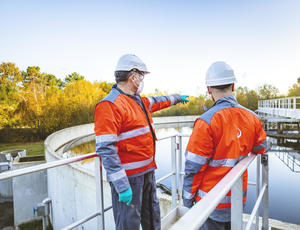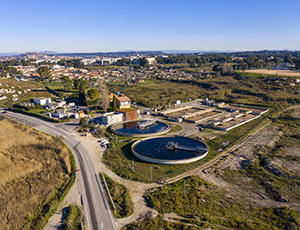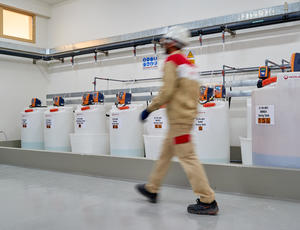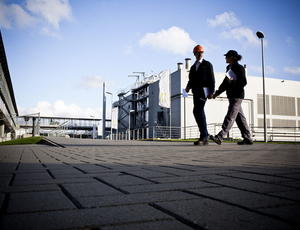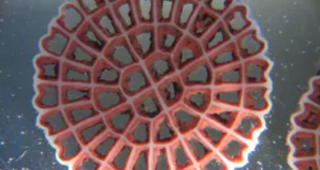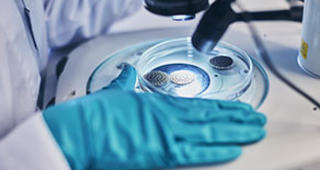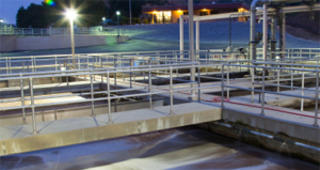BAS™ is a biofilm and activated sludge solution. The use of the MBBR solution in combination with the downstream activated sludge system creates optimal conditions for organics removal, reduced sludge production and a well-settling sludge from the activated sludge zone.
Overview
BAS™ is a combination of two technologies: an MBBR followed by a conventional activated sludge process. The technology is designed to act as a pretreatment step before an existing activated sludge process and can be applied in both nutrient-rich and nutrient-limited wastewater streams.
How it works
An MBBR is a biological wastewater treatment process that uses specialized carriers to create a large protected surface on which a layer of microorganisms, called a biofilm, can attach.
As the biofilm carriers move within the MBBR, the large surface area they create provides greater treatment capacity in a smaller volume than conventional treatment methods.
Advantages of the solution
The advantages of converting a wastewater treatment plant's existing activated sludge system into a BAS™ system are:
- Extending the capacity of the existing activated sludge system.
- Protecting the activated sludge system from high organic or toxic loads.
- Improving the efficiency of the activated sludge system.
- Improving the activated sludge characteristics.
- Lower sludge production and nutrient discharge.
- Enhanced nitrification.
- Reducing the potential of sludge bulking or unstable sludge production during varying or unpredictable conditions.
The technology can be used to upgrade or augment an existing activated sludge system, allowing a wastewater treatment plant to enhance operations with minimal interruption while increasing the efficiency of the biological wastewater treatment process. This can help remove between 50 to 70% of organics and nitrogen before reaching the activated sludge system.
AnoxKaldnes™ BAS™ for nutrient-rich wastewaters
For nutrient-rich wastewaters, the MBBR step of the BAS™ technology will remove most of the easily biodegradable organics and nitrogen and act as a buffer to protect the activated sludge system from peak loads. This promotes a stable and more efficient activated sludge process with improved sludge settling characteristics and very high overall treatment efficiency.
AnoxKaldnes™ BAS™ for nutrient-limited wastewaters
For wastewater that is nutrient-limited, applying the patented BAS™ nutrient-limited process enhances the activated sludge process efficiency, effluent quality and sludge settling characteristics.
By limiting the nutrients available in the process, the microorganisms in the activated sludge step will use the biomass from the MBBR step as a food source, which results in a considerably lower sludge production.
Positive results
Due to its many advantages, the BAS™ Biofilm Activated Sludge process has been successfully applied worldwide to upgrade or even replace conventional activated sludge systems. It has been used in both municipal and industrial facilities over a wide range of plant sizes.
In the pulp and paper industry, installations of both the conventional BAS™ and the patented nutrient-limited BAS™ have shown particular benefits. Treatment solutions based on the BAS™ principle have also been installed in municipal wastewater treatment, petrochemical and food and beverage facilities.
Features and benefits
Advantages of utilizing the BAS™ technology:
- Extends the capacity of the existing activated sludge process.
- Protects the activated sludge process from high/fluctuating organic loads and from toxic loads.
- Improves activated sludge process efficiency and sludge characteristics.
- Easy implementation with little disturbance to normal operations.
BAS™ offers the advantages of MBBR:
- Compact footprint
- Simple to operate
- Flexibility in choosing downstream separation
- Robust and stable to variations in the influent
- Easy to retrofit to existing infrastructure
- Improved sludge characteristics
- Low sludge production
- Low nutrient discharge
- Enhanced nitrification
Applications
Services
We offer customers a range of services, including process support contracts, laboratory trials and diagnostic microscopy.
Resources & Product range
MBBR
The Moving Bed Biofilm Reactor (MBBR) solution is a biological wastewater treatment and water treatment process where a microorganism biofilm grows on carriers suspended in wastewater that removes pollutants in a cost-efficient way. It can be used across almost all municipal and industrial market sectors.
Z-MBBR®
Veolia Water Technologies AnoxKaldnes has launched a new generation of biofilm carriers for moving bed biofilm reactors: Z-MBBR. The new carrier is the result of two decades of development work.
HYBAS™
HYBAS™ is an Integrated Fixed Film Activated Sludge (IFAS) solution where carriers are strategically added to the whole or a part of the aerated activated sludge volume. It is a compact and cost-effective way to upgrade an existing activated sludge process or to apply when constructing a new wastewater treatment plant. This solution improves nitrification and reduces the sludge load on the secondary clarifiers.
Contact
The BAS™ biofilm activated sludge solution is an optimally designed combination of the AnoxKaldnes™ MBBR biofilm technology and conventional activated sludge. When the two technologies are positioned in series they create optimal conditions for organics removal, reduced sludge production, and the development of activated sludge with excellent settling characteristics. Since it was developed, the process has been successfully applied worldwide across municipal and industrial sectors over a wide range of plant sizes
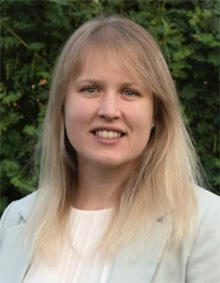
Lina Falk Lingärde
Process Engineer
FAQ about BAS™
What are microorganisms?
A microorganism or a microbe, is a microscopic organism such as bacteria and fungi. Microorganisms are diverse and can be found in almost every environment on Earth, from the depths of the ocean to the soil, and even within the bodies of other organisms.
Microorganisms are fundamental to life on Earth, as they play vital roles in nutrient cycling, decomposition, and various ecological processes. Microorganisms are also used in industrial and municipal wastewater treatment processes to break down organic waste.
What is a biofilm?
A biofilm is a group of microorganisms growing together on a surface.
What is activated sludge in wastewater treatment?
Activated sludge is a biological process where microorganisms, living in aggregates, remove organic matter, suspended solids and other pollutants from wastewater.
The activated sludge process is an effective and widely used method for treating sewage and it plays a crucial role in improving the quality of water before it is released into rivers or oceans or before it undergoes additional treatment for further purification.
What is a moving bed biofilm reactor (MBBR)?
An MBBR is a biological wastewater treatment process where biofilm grows on carriers suspended in the wastewater. The system removes pollutants in a compact and robust way.



